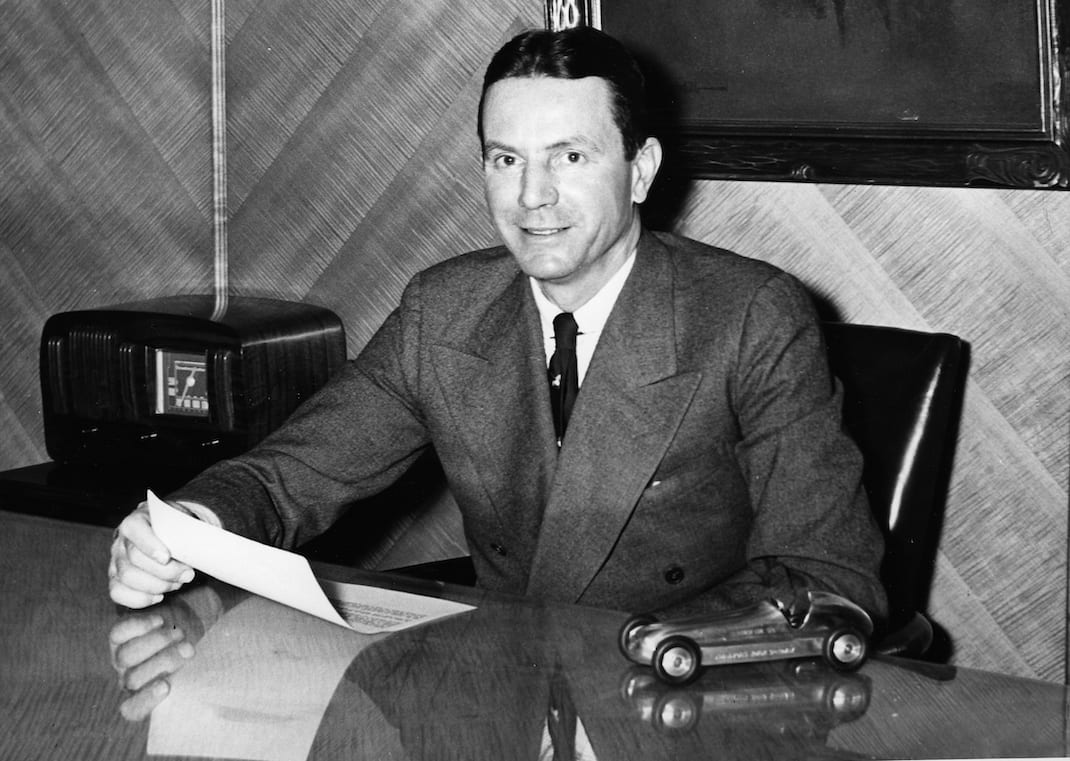Anton Hulman Jr. is, perhaps, the most important figure in the 100-plus-year history of the Indianapolis Motor Speedway.
Hulman purchased the track in 1945, saved it from certain destruction and elevated its stature well beyond anything the original founding fathers could have imagined.
It was under Hulman’s leadership that the speedway and its cornerstone event, the Indianapolis 500, gained national and international acclaim, while achieving an iconic status that exceeded the boundaries of both auto racing and sports.
Hulman was born to a wealthy family in Terre Haute, Ind., on Feb. 11, 1901. His was not an automatic access to the family fortune, however. After he graduated from Yale in 1924, where he starred in track and football, Hulman was expected to prove himself in the family business.
Given charge of the Clabber Girl Baking Powder Co., one of many Hulman family holdings, Hulman’s task was to revive the brand’s sagging profits. He developed a 10-year plan, sent a squad of salesmen across the country and made Clabber Girl the top-selling baking powder in the nation.
Hulman’s business savvy proved such that at age 30 he had complete control of all Hulman and Co. businesses. When he took on the speedway, the challenge required all of his accumulated business acumen.
Hulman’s purchase of the speedway happened because of the persistence of three-time Indianapolis 500 winner Wilbur Shaw. Conducting secret Firestone tire tests during the winter of 1944, Shaw was appalled at the condition of the speedway. Since racing was shut down during World War II, the grounds had become overrun with weeds, brush and trees. The wooden grandstands were falling down.
The part of Gasoline Alley damaged by fire before the 1941 500 had not been repaired. The vegetation grew so thick between the famed bricks that it had to be cleared for Shaw to safely run his race car.
Immediately following the test, Shaw flew to New York and met with track owner, former racer and World War I flying ace Eddie Rickenbacker. Rickenbacker’s intentions were to ready the track for the 1946 500. However, he preferred to get out from under it and concentrate his resources on his latest venture, Eastern Airlines.
Shaw originally considered buying the speedway himself and began seeking investors. Many were interested, but Shaw realized that most wanted the speedway for their own personal agendas and there was little concern about continuing the 500.
Shaw had reached the point of despair about the future of his beloved track when investment broker Homer Cochran introduced Shaw to Tony Hulman.

Hulman had attended the 500 regularly since his first trip there in 1914 as a child and shared Shaw’s passion for the speedway, the 500 and their unique place in Indiana culture.
Ironically, Hulman had also received inquiries from Churchill Downs, home of the Kentucky Derby, regarding purchasing that facility. Hulman wasn’t interested. However, the more he talked with Shaw, the more convinced he became that he could preserve the speedway.
On Nov. 14, 1945, Rickenbacker flew from New York and met with Hulman at the Athletic Club in downtown Indianapolis. Hulman purchased the Indianapolis Motor Speedway for between $700,000 and $750,000.
The shy, unassuming Hulman, desiring anonymity, named Shaw president and general manager, while proclaiming himself chairman of the board.
To continue reading, turn to the next page.
